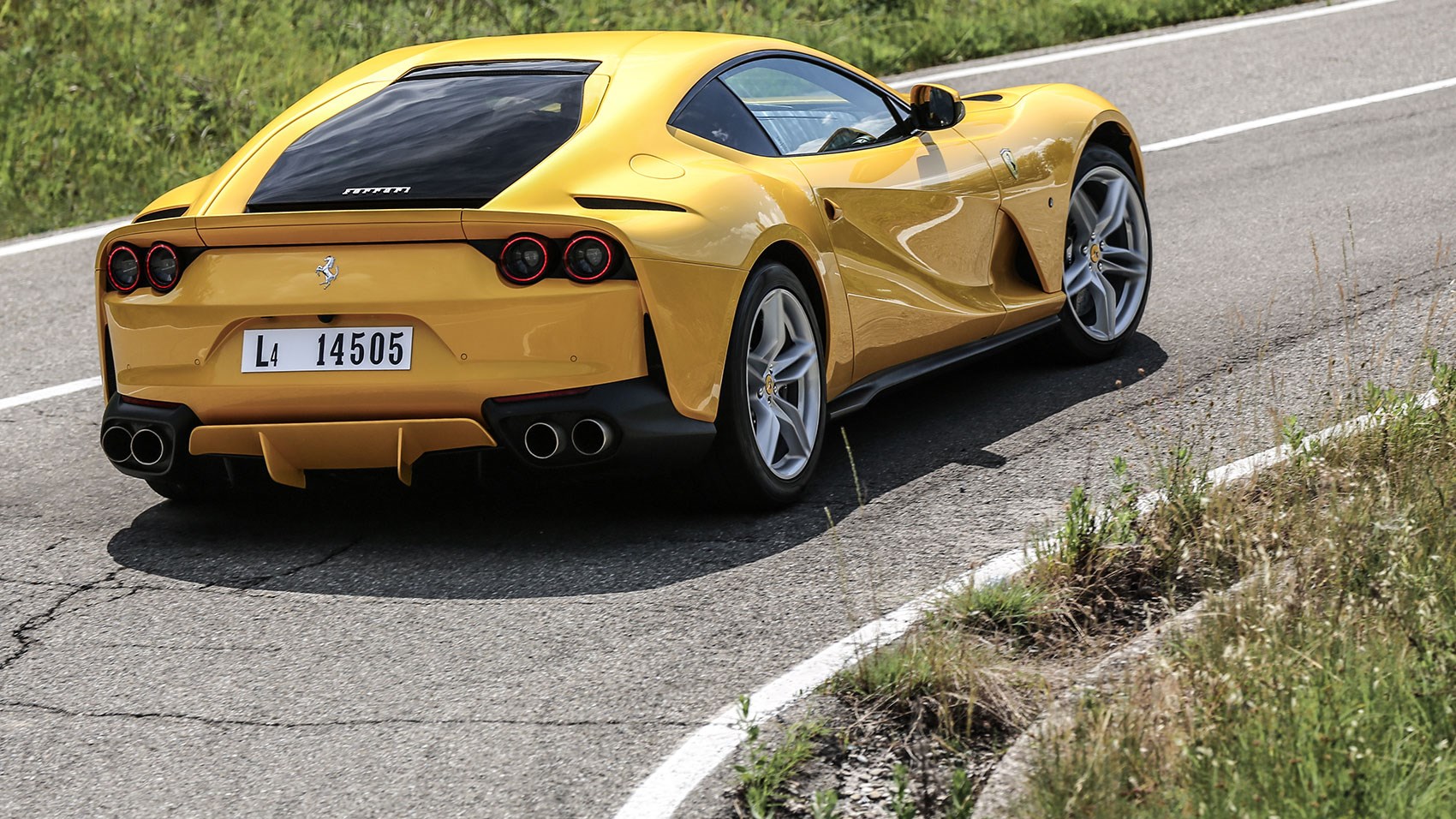► Ferrari 812 Superfast review
► Watch our video, read our test
► Replaces F12 front-engined GT
Measured in Brexit imperial it’s not quite there but for the sake of argument let’s give this one to them: the new 800hp Ferrari 812 Superfast is here, the most powerful series production car ever to come from the Italian legends – and we’ve driven it.
800 horsepower! So the 812 Superfast is a supercar then?
Look at the numbers and you can’t call it anything else. 0-62mph in 2.9 seconds, 0-124mph in 7.9 seconds and 211mph flat out – there’s no doubt it qualifies.
But if you’re getting technical about it, the engine is in the wrong place and Ferrari spent a considerable amount of time telling us quite pointedly that this is a GT car, even talking about luggage space in the press conference, which may well be a first.
All that without turbos though?
Rejoice all those who worship natural aspiration. The turbo certainly has its place, not least in other Ferraris but for now the range-topper keeps it distinctly – and gloriously – old school.
Read more technical details about the Ferrari 812 Superfast here.
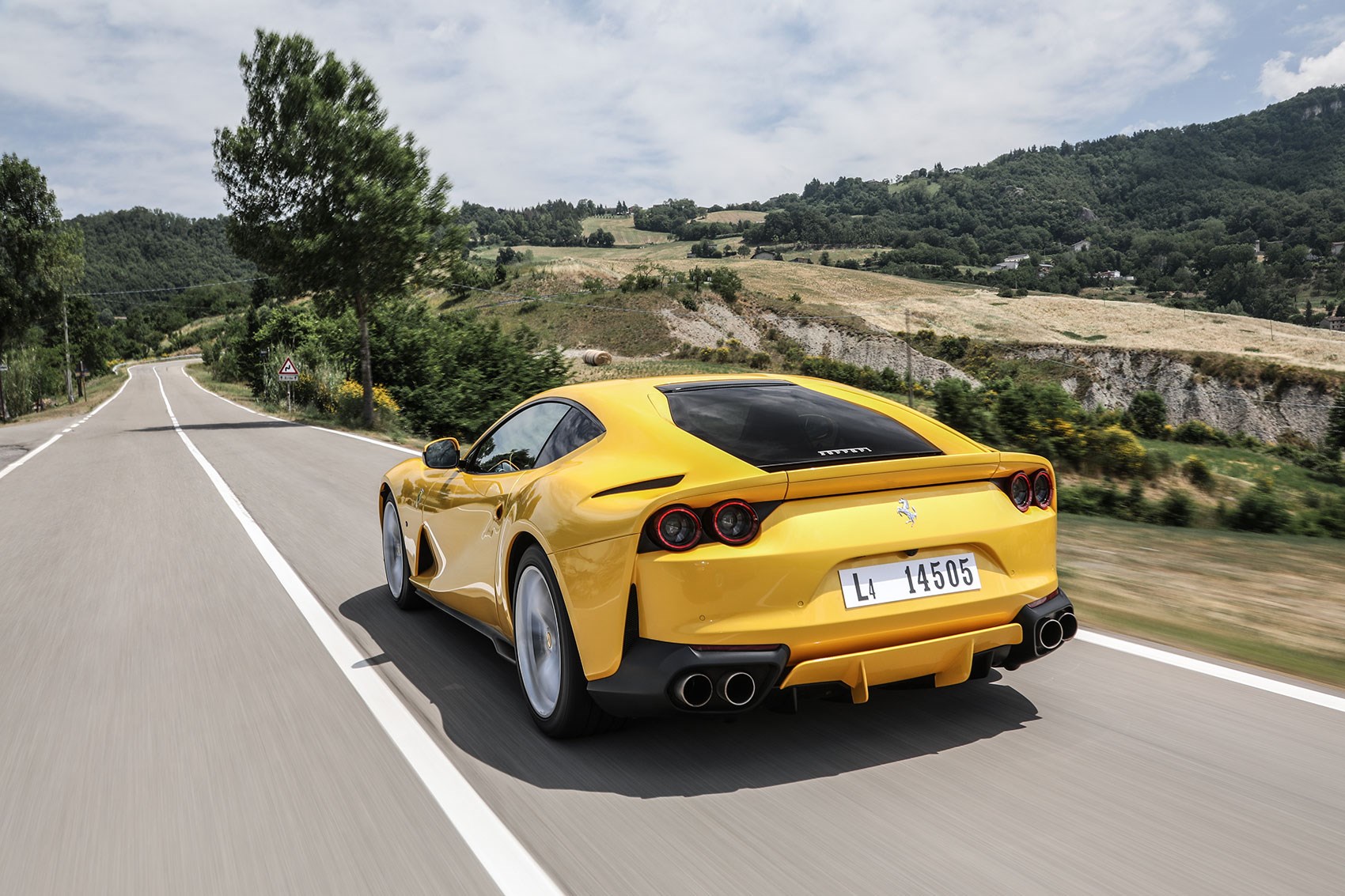
Just ahead of your toes sits a 6.5-litre V12, stroked to take it out from 6.3-litres as in the F12 tdf but with some additional tech like variable length inlet tracts (powered by the engine oil no less), complemented by more traditional power boosting techniques like a raised compression ratio.
Such hardware is impressive but it’s what that translates to that will get the juices flowing. Peak power of 789bhp at 8500rpm, with a redline at 8900rpm, is outrageously high for a 6.5-litre V12, and equally gob-smacking is the specific output of 123 horsepower per litre. This engine means business.
Isn’t that a bit much for rear-wheel-drive?
You probably wouldn’t want to drive one across an ice rink, but there’s a lot of tech designed to keep you pointing in the right direction, and sometimes not. Alongside the E-Diff and F1-Trac, the 812 gets the second-generation version of Virtual Short Wheelbase – namely front tyres that are much wider than standard to give sharp turn-in, but countered by automatically controlled rear steering to avoid unwanted rotations.
This is also the first Ferrari to use electric power steering, but it’s been used to build in a couple of extra features: Ferrari Power Oversteer and Ferrari Peak Performance both ‘suggest’ ideal steering inputs through varying the torque to the steering wheel, depending on the attitude of the car. It sounds complicated but its operations are very subtle, ideally so because both only kick in near the limits of grip.
Doesn’t all that tech dilute the Superfast driving experience?
Not a bit of it. It may be groaning in electronic aids (even taking the passenger digital display to new levels, see below) but driving the 812 remains a chiefly analogue experience.
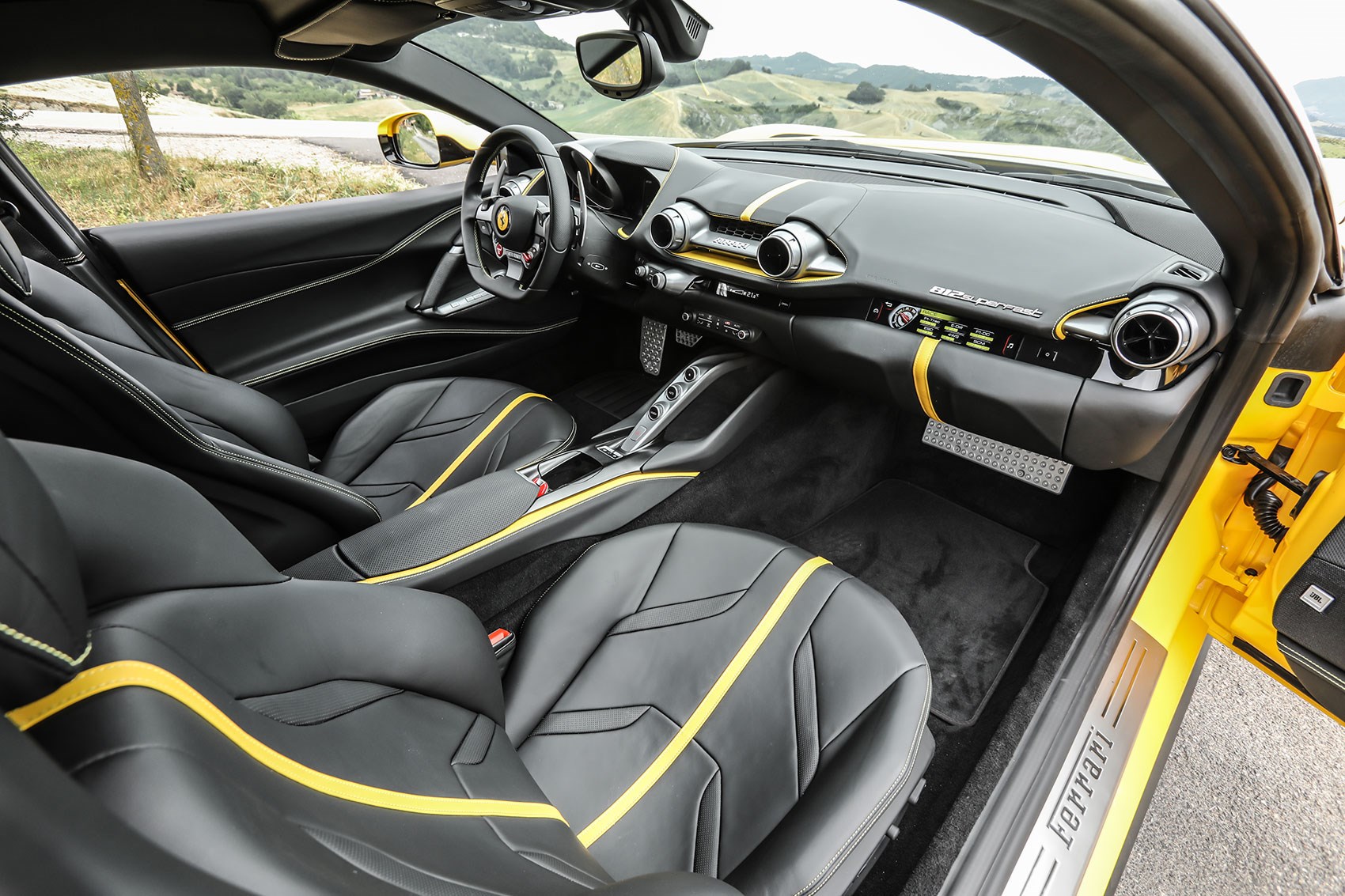
As you’d hope, the engine dominates proceedings whether you’re trundling around or dancing in the gloriously lustrous paintwork. It’s an achievement just to improve on the F12’s engine, but this 6.5-litre V12 is a precision instrument capable of unleashing incredible forces. Revving past 8900rpm releases no more power but you’ll go all the way to 8900rpm again and again just to buzz your synapses, and hear a noise that’s good enough to make you consider wearing dubious branded polo shirts every single day.
Any fear that electrickery will spoil the steering is quickly dispelled, too. Less nervous than the F12 it replaces, the Superfast turns in eagerly, just as the spec sheet says it will, and keeps you looped in on the amount of grip to hand. Ultimately a V8-powered, more entry-level 488 is more sensitive, but that is a darting mayfly compared to the 812’s fractionally more heavyweight stance.
On broken Italian roads not dissimilar to those in the UK, the button to soften the suspension was pressed frequently, although its effects were marginal.
Our time with the 812 Superfast included some laps of the legendary Fiorano circuit, and despite its size and intentional road focus it revealed a higher level of ability and balance.
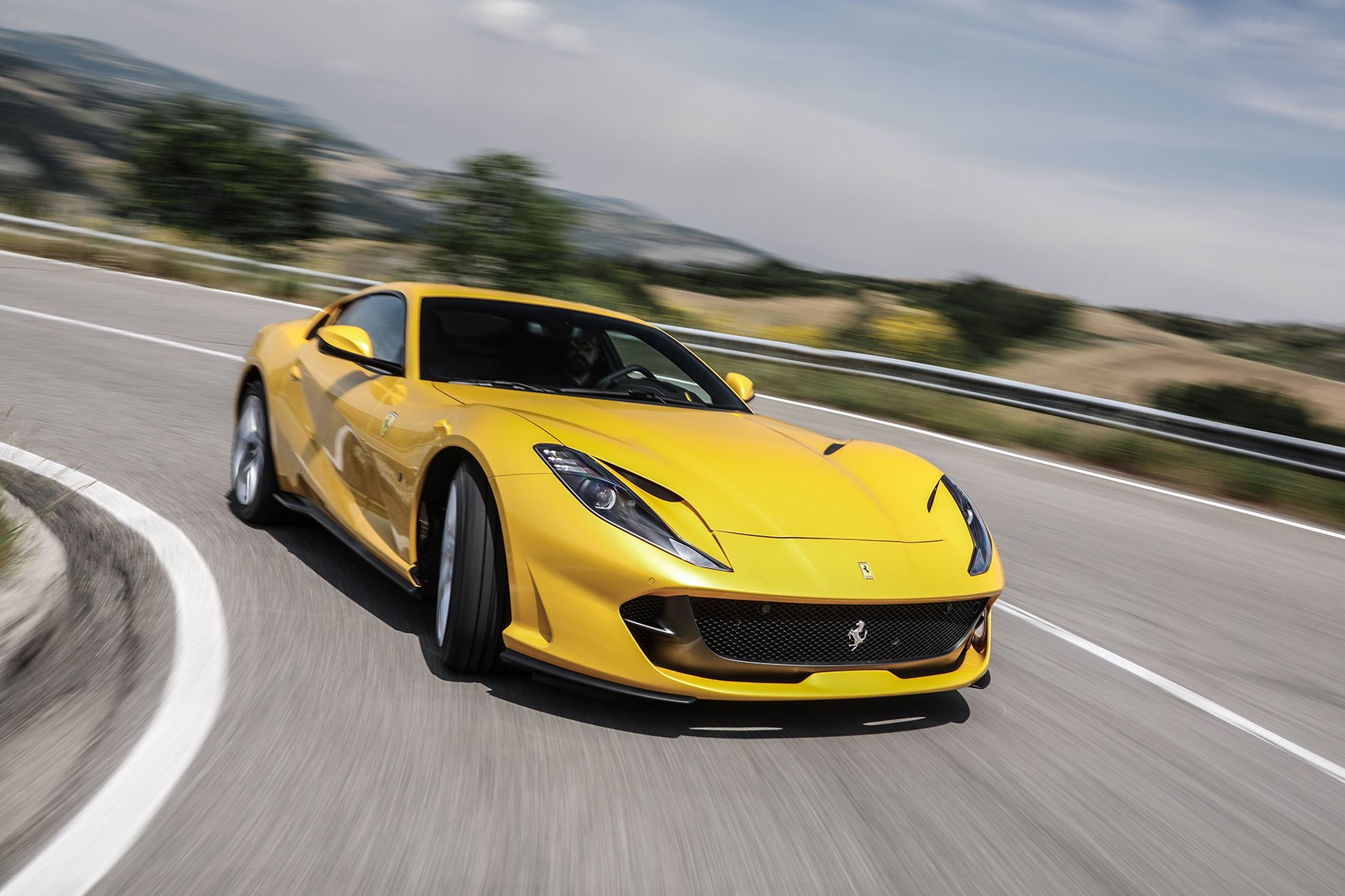
Remarkably adjustable and with a playful balance of grip between front and rear ends it can deliver clean and hot or slow and smoking laps with equal ease.
With the manettino steering wheel switch flicked to the CT Off position it also allows plenty of oversteer – we’re talking fourth gear drifts at nearly 100mph – as you’d probably want in a car costing £250,000…
Is the Ferrari Superfast still a looker though?
There’s so much aero going on with the 812, but the real pleasure comes from seeing just how well Ferrari has integrated air management into the overall shape. It has as much downforce as the mad F12 tdf but with less drag, with 40% of that coming from the underbody diffuser.
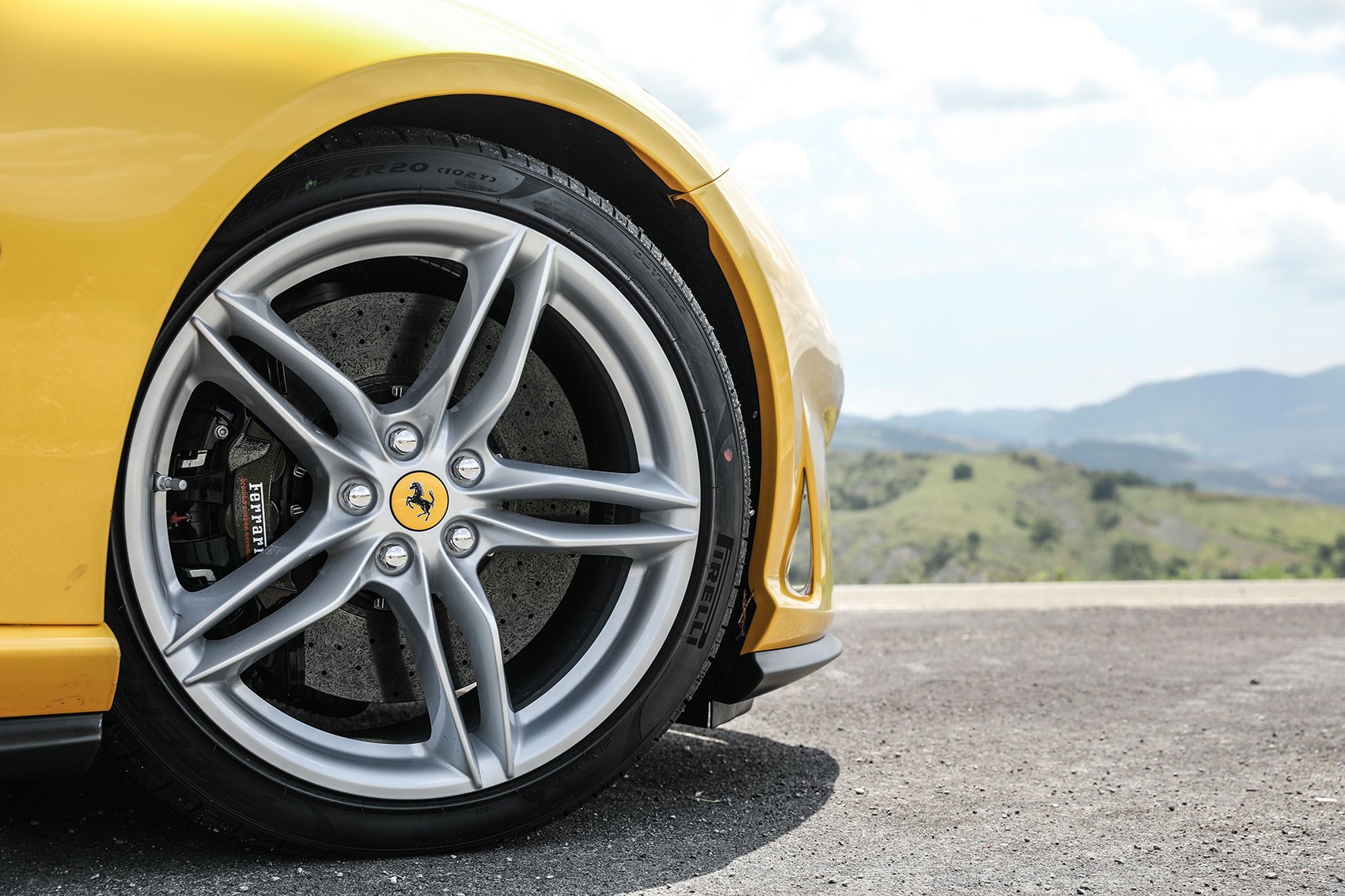
The proportions reflect the engine layout and give space in the 812’s cabin, and while it follows the maxim that big Ferraris look better in colours other than red, this is a gloriously dramatic shape.
Is the 812 nice inside too?
It’s certainly the most liveable car with this kind of performance at any price.
Sensibly it inherits some of the new dash layout from the Ferrari GTC4 Lusso, and although it’s still more complex than a single display, the twin-screen layout sandwiching the giant analogue rev counter still puts the most important info right in front of you.
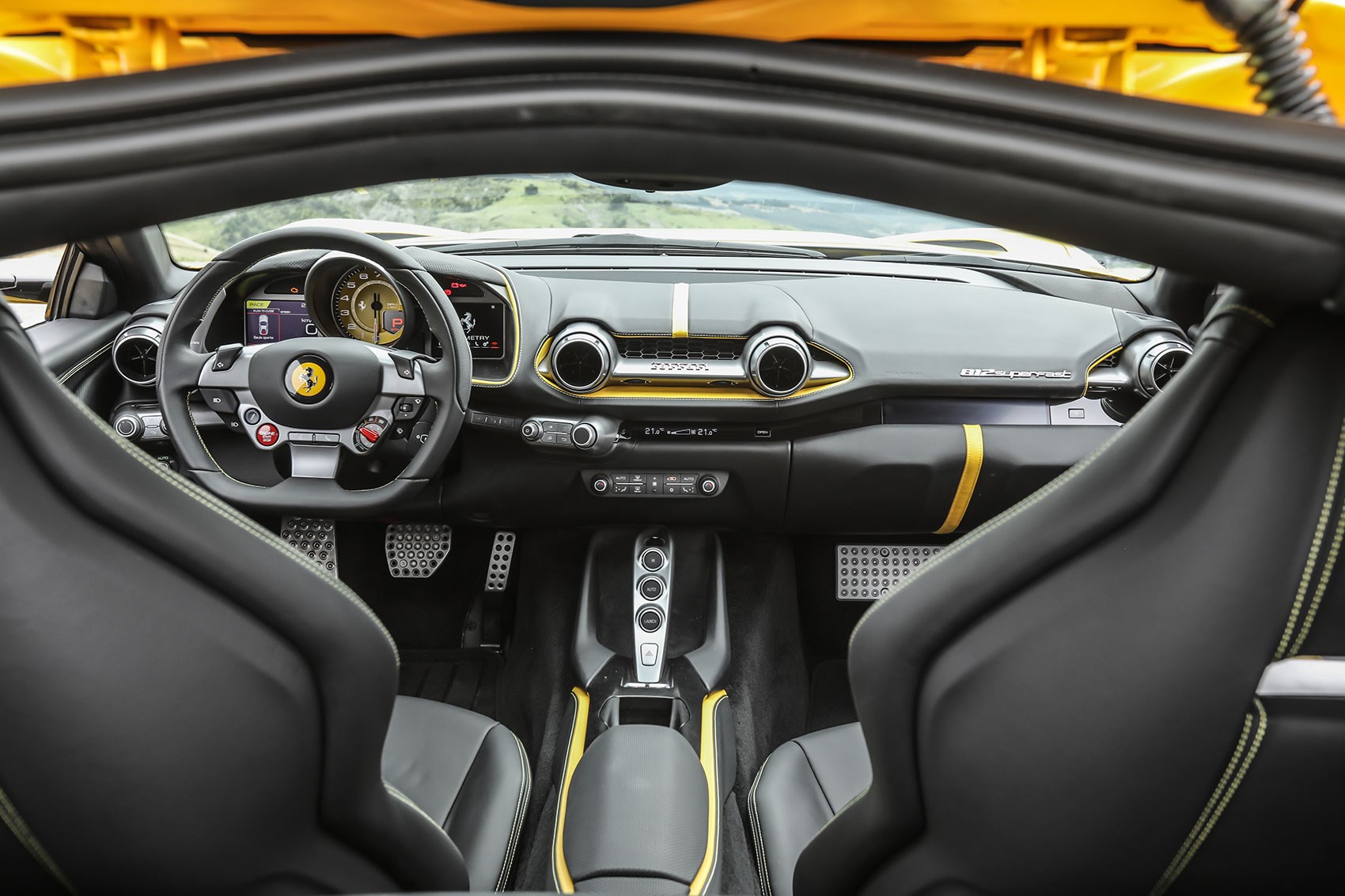
There’s also a boot offering between 320-500 litres of space, depending on how you configure it. This is a pleasingly practical GT with a very usable loadbay – certainly enough to get a long way across Europe before you need fresh pants.
Verdict
The 812 fulfils the tough brief in a dazzling fashion. Easier to live with in normal driving than the 488 but utterly absorbing when stretched, it blurs the lines between GT and supercar to the point where it lacks a rival that can match its breadth of ability.
Ferrari was hardly likely to make a hash of the 812 Superfast, having produced a series of 12-cylinder GT gems all the way back to the 1960s. But more importantly the Superfast is proof that for the time being at least one of the world’s greatest engine builders wants to carry on making big-capacity, naturally aspirated masterpieces – installed in a car suitably brilliant to carry them.
Read more Ferrari reviews by CAR magazine
